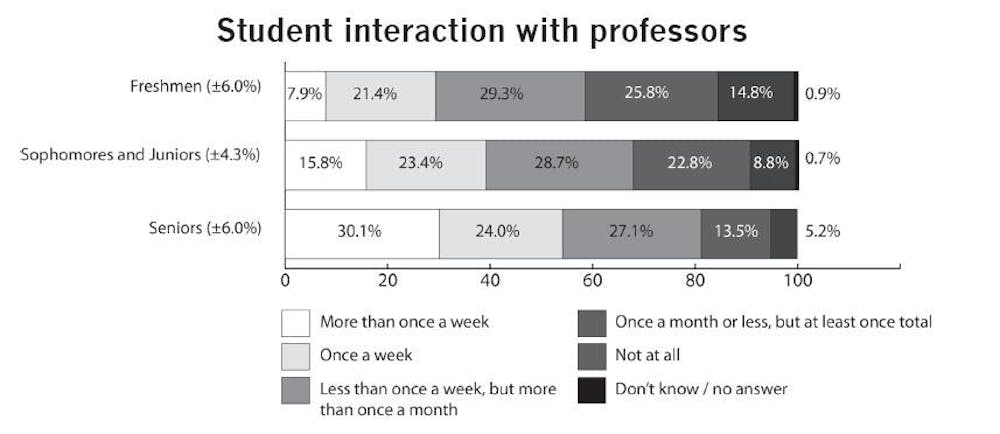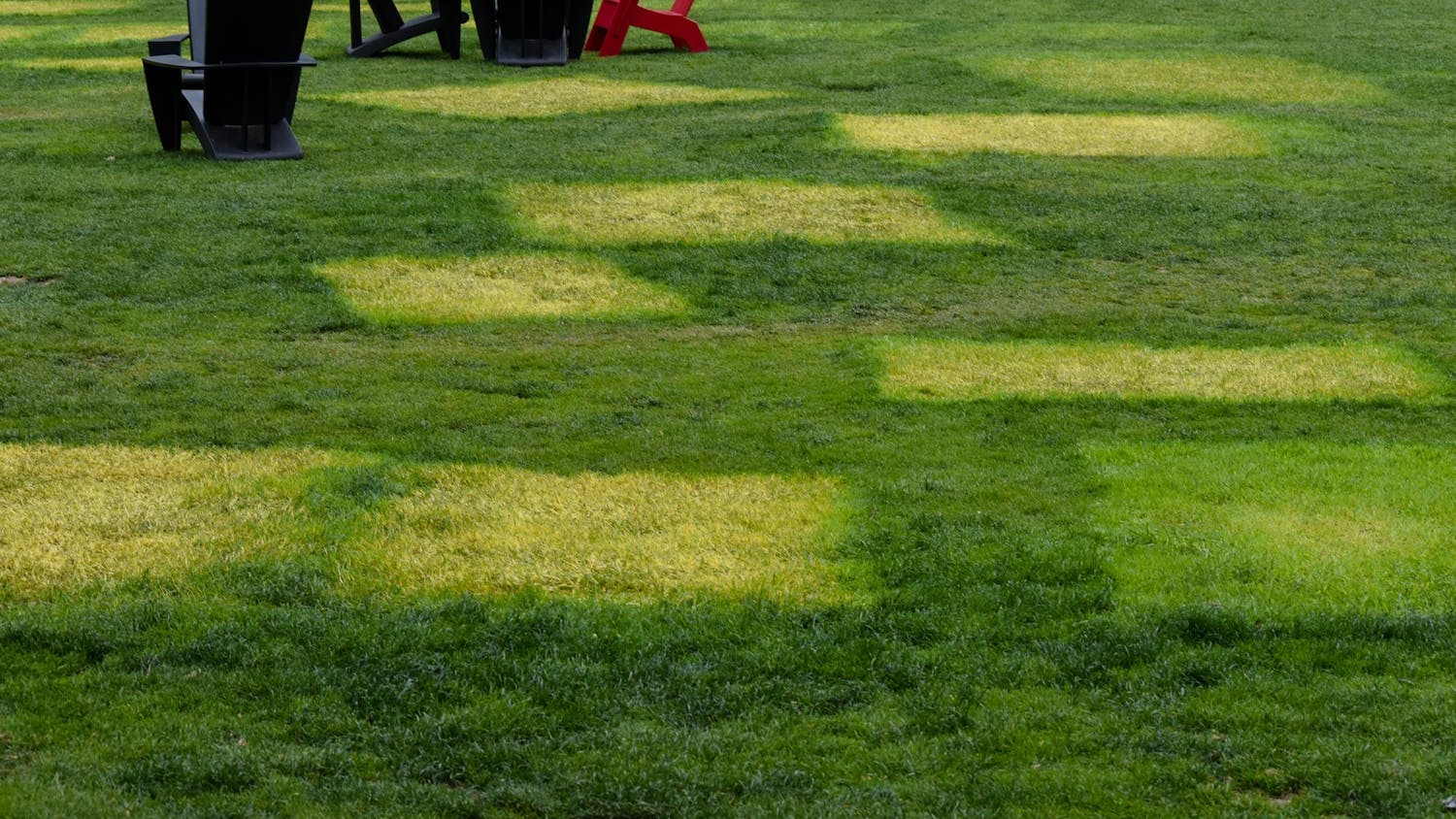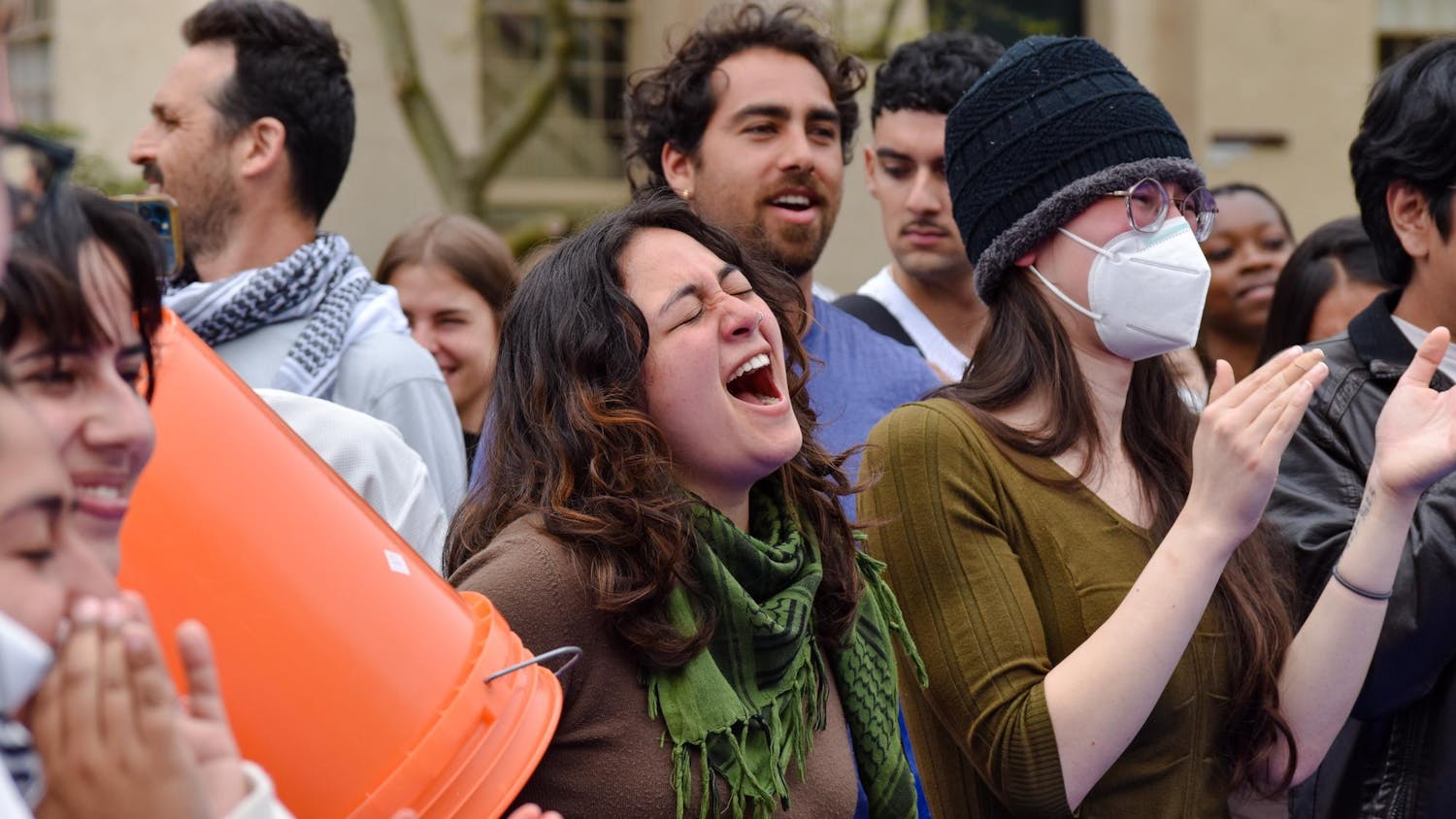At Brown, professors can be found lecturing to hundreds from the stage of Salomon 101, performing cutting edge research in Sidney E. Frank Hall for Life Sciences and — at a high rate — engaging in conversation with their students outside the classroom. According to the results of this month's Herald poll, about 90 percent of students interacted with a professor outside of class at least once so far this semester.
For Dean of the College Katherine Bergeron, the poll results are just one more indication that advising at Brown is continuing to move in the right direction. Last fall's Herald poll showed that about 60 percent of students were satisfied with their advising experience, up from just under 50 percent in spring 2008.
Bergeron, who has spearheaded improvements to advising programs over the last several years, said she likes to view the current level of interaction as a baseline off which student-faculty connections can only grow stronger.
Though students can and often do turn to their professors' scheduled office hours for guidance, she said, a number of other resources have made important contributions to the rising level of interactions.
Each weekday afternoon, a rotating cast of 19 faculty members make themselves available to students in Advising Central for cookies and conversation. A group of nine Randall advisers is also available specifically to address sophomore concerns.
"The Faculty Advising Fellows program is one part of a whole array of things that the College has been doing, in collaboration with (the Office of) Student Life, to improve student experience of the open curriculum at Brown," Bergeron said. "The open curriculum is an opportunity for students to be in dialogue with professors."
According to Bergeron, one of the most beloved and worthwhile components of the program has been the fellows' dinners.
"What we discovered was that this was a very profitable enterprise," she said. "Students felt that they were worth going to and faculty felt that it was really beneficial."
Danny Bressler '12 was quick to express his "love" for the program — and quick to worry that further publicity might cause the ever-popular meals to fill up more rapidly than they already do.
"Free food, good conversations and good people," he said of the limited-capacity events, which require a student RSVP.
Though Bergeron said she was thrilled by the results of the poll, to her, the numbers could always be higher.
"Maybe you feel a little too much that you should already have the answer," she said of students who have yet to reach out to professors. "College helps to develop a different way of understanding how to ask for help."
The best thing that she can do as an administrator, Bergeron said, is to continue to encourage these interactions. From faculty advising events to cookies and tea with a Randall adviser, students never know when they could "click" with a faculty member.
"Serendipity is a very good way to start a relationship," she added.
Reaching out
Brynn Smith '11, coordinator of the Matched Advising Program for Sophomores, admitted that she had never been to a professor's office hours until the second semester of her junior year.
When she finally did, she said, it was wonderfully empowering.
Like the Randall advisers, MAPS is devoted exclusively to providing sophomores with more guidance during their time at Brown.
Though the program deals with all aspects of college life — from academics to personal issues — Smith said that senior mentors emphasize to sophomores how important it is to have "some adult that you can have a connection with and really feel comfortable with if you have a problem."
Last year, MAPS hosted a panel on how to interact with professors. Smith said the group plans to do so again in the coming months.
A common misperception that advisees hold coming into the program, she added, is that they have nothing "good enough" to say to their professors. The panels and other events provide an informal setting that helps to demystify professors and to foster those connections.
One of the most important goals of the program, Smith emphasized, is to empower students to take control of their own education. Sometimes, all it takes is an introduction.
"This is a professor, and they're not this scary box of intelligence," she said. "This is someone at Brown who is teaching undergrads to help you out."
Arnold Weinstein, professor of comparative literature, wrote in an e-mail to The Herald that he has recently found himself taking a more proactive approach to encouraging student interactions through announcements at the beginning and throughout the course of the semester. He tells his students to take advantage of his office hours.
"You're in this course, and you have a claim on my attention," Weinstein wrote.
Weinstein participated in the Curricular Advising Program for many years.
"I urged my first-year students to go to office hours, knock on doors, tell professors outright that they wanted to pick their brains … The faculty is more shy than you think, so you have to take the lead," he wrote. "It is inherently flattering to a professor when a student comes in to see him/her, to ask further questions about a lecture, the course, even wider topics."
A person, not a ‘pedestal'
According to the poll, seniors are far more likely to have more than one interaction a week with faculty members than non-seniors. Just over 30 percent of seniors said they interacted with professors at least once a week, compared to about 16 percent of sophomores and juniors combined and 8 percent of freshmen. But there is no significant trend for lower levels of interactions in the poll. For all class years, contact with professors outside of class range between 84 and 95 percent.
Though Smith said she was more likely to come into contact with faculty both as a result of her job and due to the various concentration requirements needed to be fulfilled by seniors, she felt that her advising experience was lacking in one critical element — life after Brown.
"I don't even know where I'd go for those types of questions," she said. "I'm sure that there is someone out there whose job it is to help seniors who are lost."
While Marley Pierce '13 said she frequents office hours, especially near the end of the semester, she is far more likely to be seeking paper advice than casual conversation.
"I almost feel like I don't want to take up my professor's time just going to talk about something separate from academics," she said. "If I have actual questions that they can answer, that's different."
In regard to other concerns, Pierce said, she is more hesitant to approach faculty members, who often tell her, "You have a really good head on your shoulders. I'm sure you'll make the right decision."
"Maybe I haven't met the professor yet that I've really clicked with," she said.
For some students, gaining valuable face-to-face time with professors doesn't have to be all about their classwork.
"I generally don't use the office hours for academic reasons," said Webber Xu '12, a senior sales associate for The Herald. "I go talk to them if I find a professor interesting or if they're a nice person."
While some first-year students might be intimidated by large class sizes, Xu said he has been frequenting the Department of Economics — the home of his favorite professor — since his freshman year.
"We joke around all the time," Xu said. "I just go to say hi and hang out. But I also go to him if I need to find a job in the department or if I want to become a (teaching assistant)."
Both Xu and Bressler encouraged others students to reach out to professors without fear.
"Don't hold them up on a pedestal," Bressler ur
ged. "They're regular people."
While Mariela Martinez '14 said it was initially intimidating to introduce herself to faculty members, she has since done so on a number of occasions.
"The professor has always been really good at asking me questions first," she added. "It was easier for me to go because they're also really curious about who I am."
With so many things to juggle during a first semester at Brown, from shopping classes and extracurriculars to making new friends, connecting with professors was a lower priority for some freshmen.
"It's almost like I don't think to take advantage of those opportunities," said Ben Gellman '14, who said he has not yet gone to office hours. With final exams rapidly approaching, he said he plans to attend office hours before the end of the semester.
Ultimately, Bergeron emphasized, students need to remember that faculty are present as intellectual allies — and as friends.
"It is actually wonderfully empowering to discover how much it matters to a faculty member to hear from a student that they mattered," she said.
Conversations between students and faculty "are the actual threads of the intellectual community we fancy ourselves to be, but all too often are not," Weinstein wrote. "I'm simply not in a position to gauge what students gain by chatting with me, but I have a real sense it is a central — if time-consuming — part of my job."
The Herald poll was conducted Nov. 1–2 and has a 3.0 percent margin of error with 95 percent confidence. For the subset of freshmen, the margin of error is 6.0 percent. For the subset of sophomores and juniors combined, the margin of error is 4.3 percent. For the subset of seniors, the margin of error is 6.0 percent. A total of 915 students completed the poll, which The Herald distributed as a written questionnaire in the University Mail Room in J. Walter Wilson and the Stephen Robert '62 Campus Center during the day and the Sciences Library at night.

ADVERTISEMENT




